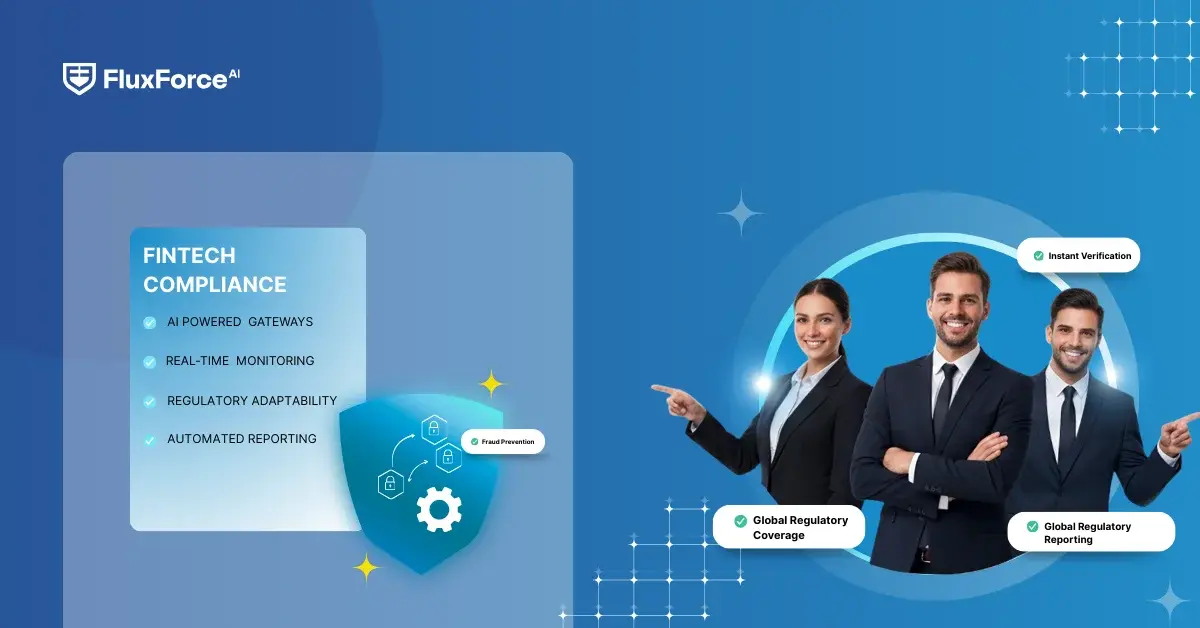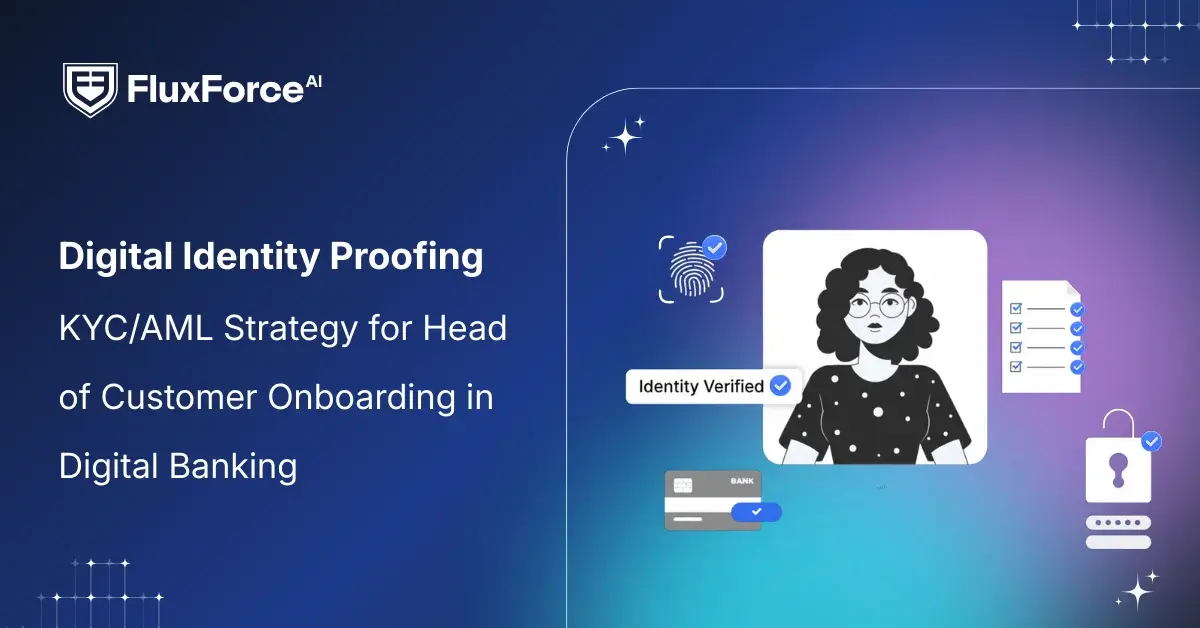Listen to our podcast 🎧

Introduction
Fintech collaborations provide traditional banks with the opportunity to expand financial services from desk-based operations to modern digital platforms. However, integrating with UPIs and apps introduces significant regulatory compliance burdens for compliance teams.
APIs drive interactions between legacy and modern systems, and banks must ensure that every request is securely transmitted. Traditional API security approaches cannot effectively address evolving fraud patterns and frequent regulatory updates, often leaving gaps at scale.
Integrating AI and automation technologies into API gateways offers a data-driven solution. It enables continuous monitoring, enforces robust security controls, and reduces compliance gaps.
This article highlights the critical need for AI-powered API platforms in fintech and how it help financial institutions maintain continuous compliance and security.
Why AI is Essential for Enhancing API Security?
With an average bank relying on hundreds of APIs within its systems, the surface for cyberattacks expands dramatically. Banks with weak authentication methods, manual processes, and a lack of real-time monitoring often struggle to maintain security and compliance in scalable API environments.
Integrating Artificial Intelligence into API gateways enables automated, real-time scanning of incoming requests, exactly the way AML, KYC, and GDPR frameworks demand.
Key areas where AI strengthens API security include:
- Fraud detection and anomaly recognition– identifying suspicious transaction patterns that rule-based systems fail to detect.
- Adaptive authentication controls– ensuring regulated validation and multi-factor authentication to prevent credential stuffing or replay attacks.
- Regulatory-grade auditability– maintaining detailed logs and automated compliance evidence that auditors and regulators demand.
- Scalability in high-volume environments– managing billions of requests without performance issues or human intervention.
The Benefits of Secure API Management for Financial Institutions

For financial institutions engaged in fintech collaborations, a secure API gateway provides significant compliance and operational benefits. These include:
1. Reduced Compliance Costs Through Automation
Institutions can reduce regulatory monitoring expenses by up to 30% with automated API policy enforcement. AI-powered gateways ensure AML and KYC adherence without expanding compliance teams, directly lowering costs tied to manual resources.
2. Proactive Fraud Reduction without Disruption
AI-enabled gateways apply real-time anomaly detection and dynamic risk scoring across transaction flows. This reduces fraud-related losses by 20–25% annually, while preserving seamless transaction flow and ensuring escalation of suspicious activity.
3. Minimized Regulatory Penalties
Instead of static configurations, AI-powered gateways integrate continuous regulatory intelligence feeds. This enables real-time alignment with evolving mandates such as PSD2, GDPR, and DORA, minimizing exposure to compliance gaps caused by delayed manual updates.
4. Operational Efficiency at Scale
Institutions processing millions of API calls daily can improve throughput efficiency by 15–20% with optimized gateway orchestration. Automated traffic management reduces latency while applying compliance checks inline, preserving both speed and control.
5. Institutional Trust and Ecosystem Credibility
Research indicates 72% of corporate clients prioritize regulatory compliance in banking partnerships. Secure API management demonstrates accountability, reinforcing institutional trust and accelerating fintech collaborations without reputational compromise.

Shaping the Future of AI in Finance
Fluxforce research uncovers how banks and enterprises are adapting to fraud, compliance, and data challenges in 2025.
Key AI-powered API Gateway Solutions for Fintech

AI-driven API gateways provide organizations with measurable improvements in fraud prevention, regulatory adherence, and operational efficiency. Several solutions contribute to securing API gateways, these include:
1. Machine Learning–Driven Anomaly Detection
Unsupervised ML models establish normal API traffic baselines, detecting deviations in transaction size, velocity, or geolocation. Institutions report 40% fewer false positives and up to 25% improved fraud detection, while preserving uninterrupted transaction flow.
2. Predictive Risk Scoring Engines
Predictive models assign risk scores to API requests based on historical behavior, device trust signals, and transaction velocity. High-risk calls trigger additional checks, reducing fraud interdiction time by 35% without impacting legitimate customer transactions.
3. Automated Regulatory Policy Enforcement
AI-enabled gateways embed dynamic rule engines aligned with PSD2, GDPR, and DORA. Continuous updates maintain real-time compliance, reduce manual monitoring costs by 30%, and provide auditable logs for regulatory reporting and internal governance.
4. Intelligent KYC/AML Document Processing
NLP and computer vision models parse scanned IDs and KYC forms, automating verification. Institutions achieve 25–30% faster onboarding while maintaining 95–98% screening accuracy, reducing manual dependency and accelerating regulatory adherence in high-volume operations.
Use Cases and Examples of Fintech API Platforms

1. Digital Wallet Integration for MPAY
MPAY, a digital payment provider, aimed to expand its services by transforming a network of cash-in kiosks into a comprehensive digital wallet platform.
Implemented Solution: Integrated a modern fintech platform to enable seamless digital wallet capabilities, payment acceptance, and transaction processing.
Results:
- Accelerated time-to-market for new features by 50%.
- Expanded service coverage to three additional countries.
- Increased user engagement through enhanced transaction functionalities.
2. Open Banking API Implementation by a U.S. Bank
A large U.S. bank integrated third-party solutions to strengthen collaboration and expand customer service offerings.
Implemented Solution: Deployed open banking APIs to facilitate secure data sharing with authorized third parties, enabling the development of new financial services.
Results:
- Reduced loan processing time by 40%.
- Increased customer satisfaction scores by 25%.
- Expanded service offerings through third-party integrations.
Onboard Customers in Seconds

Operational Considerations for AI-Powered Gateways

Implementing AI-driven API gateways requires strategic planning around infrastructure, governance, and performance optimization. Financial institutions must address several operational factors to maximize effectiveness.
1. Infrastructure Requirements
AI models demand significant computational resources for real-time processing. Institutions need cloud-native architectures with auto-scaling capabilities to handle peak transaction volumes without degrading response times or compliance checks.
2. Data Quality and Training
ML models require high-quality historical data for accurate fraud detection and risk scoring. Institutions must establish robust data pipelines and regular model retraining schedules to maintain detection accuracy as fraud patterns evolve.
3. Integration Complexity
Legacy banking systems often require API middleware layers to interface with modern AI gateways. Organizations should plan for gradual migration strategies that minimize service disruptions while establishing comprehensive monitoring across hybrid environments.
4. Regulatory Alignment
AI decision-making processes must remain transparent and auditable for regulatory scrutiny. Institutions need explainable AI frameworks that document how automated decisions align with compliance requirements, particularly for AML and KYC processes.
5. Performance Monitoring
Real-time API performance metrics become critical when AI processing adds computational overhead. Organizations require dashboard solutions that track latency, throughput, and compliance adherence across all gateway functions simultaneously.
Conclusion
AI-powered API gateways provide financial institutions with a robust framework to maintain compliance and secure high-volume transactions. By applying adaptive authentication, real-time monitoring, and automated policy enforcement, banks reduce exposure to fraud and regulatory penalties.
Operational planning around performance, scalability, and encryption safeguards ensures systems remain reliable under increasing transaction loads. Institutions that deploy AI-driven gateways gain measurable improvements in risk management, audit readiness, and client trust, creating consistent oversight across fintech collaborations.
For CISOs and compliance officers, these tools shift security and compliance from reactive measures to integrated, proactive operational practices that support sustainable growth.






Share this article